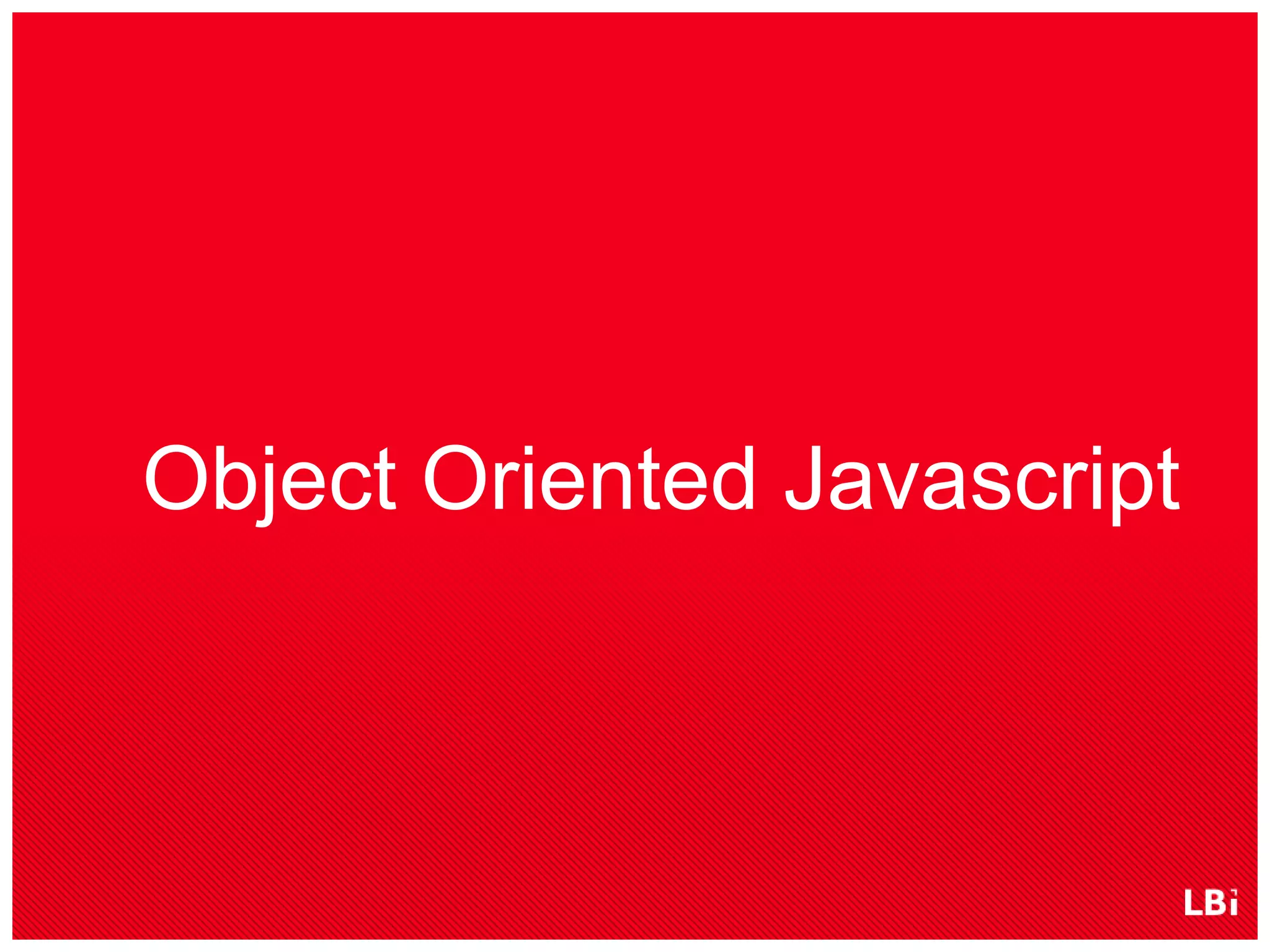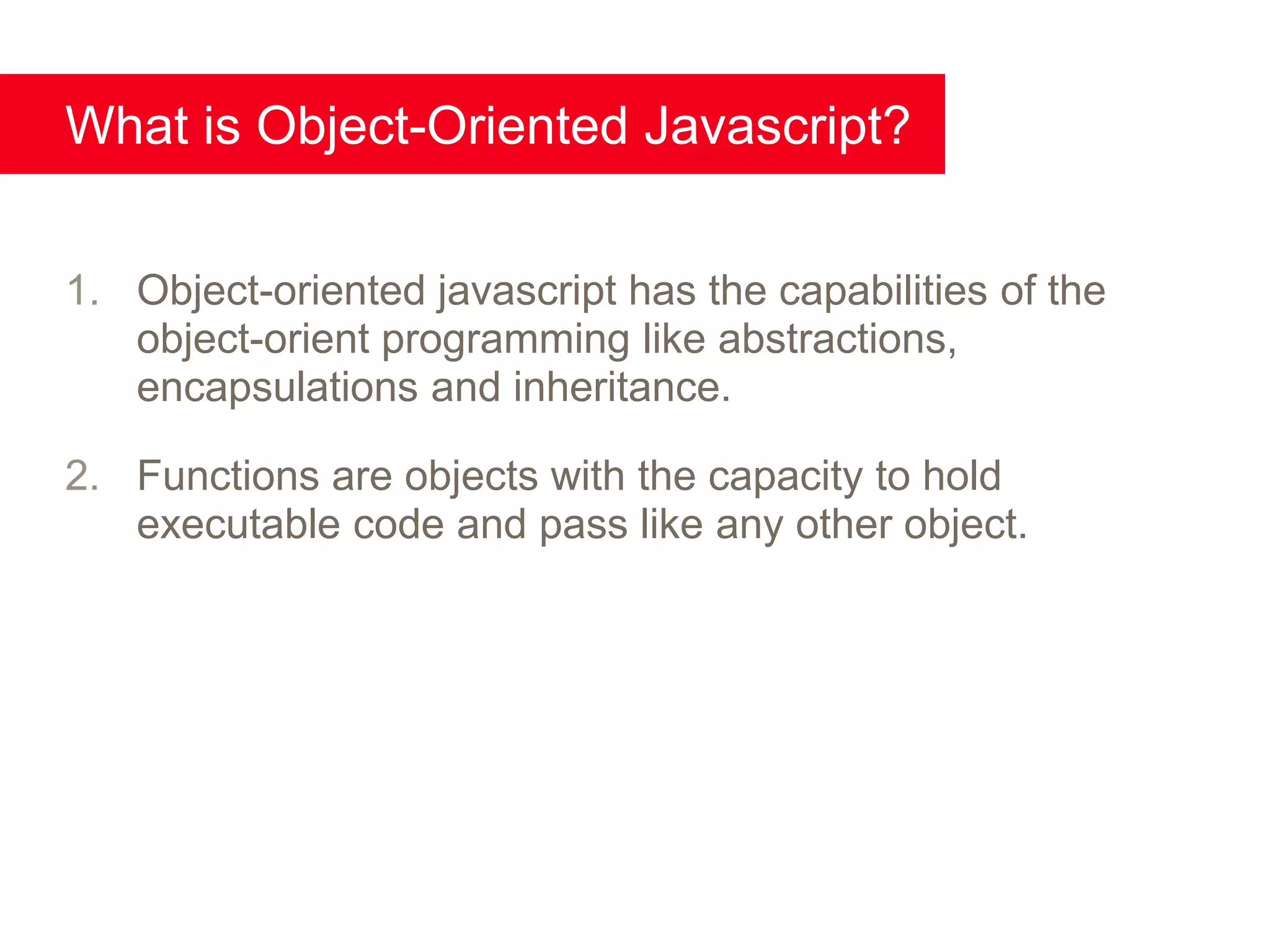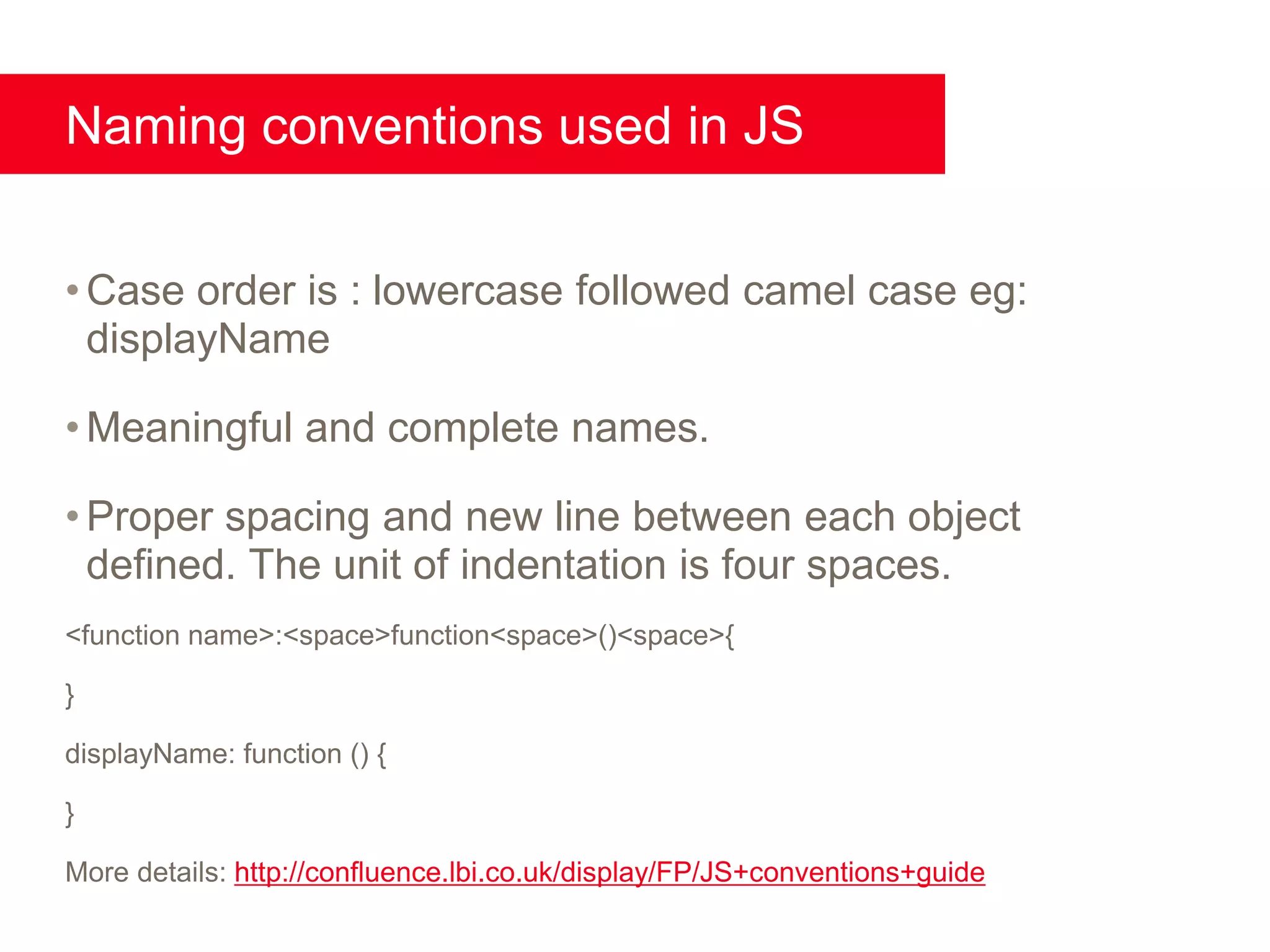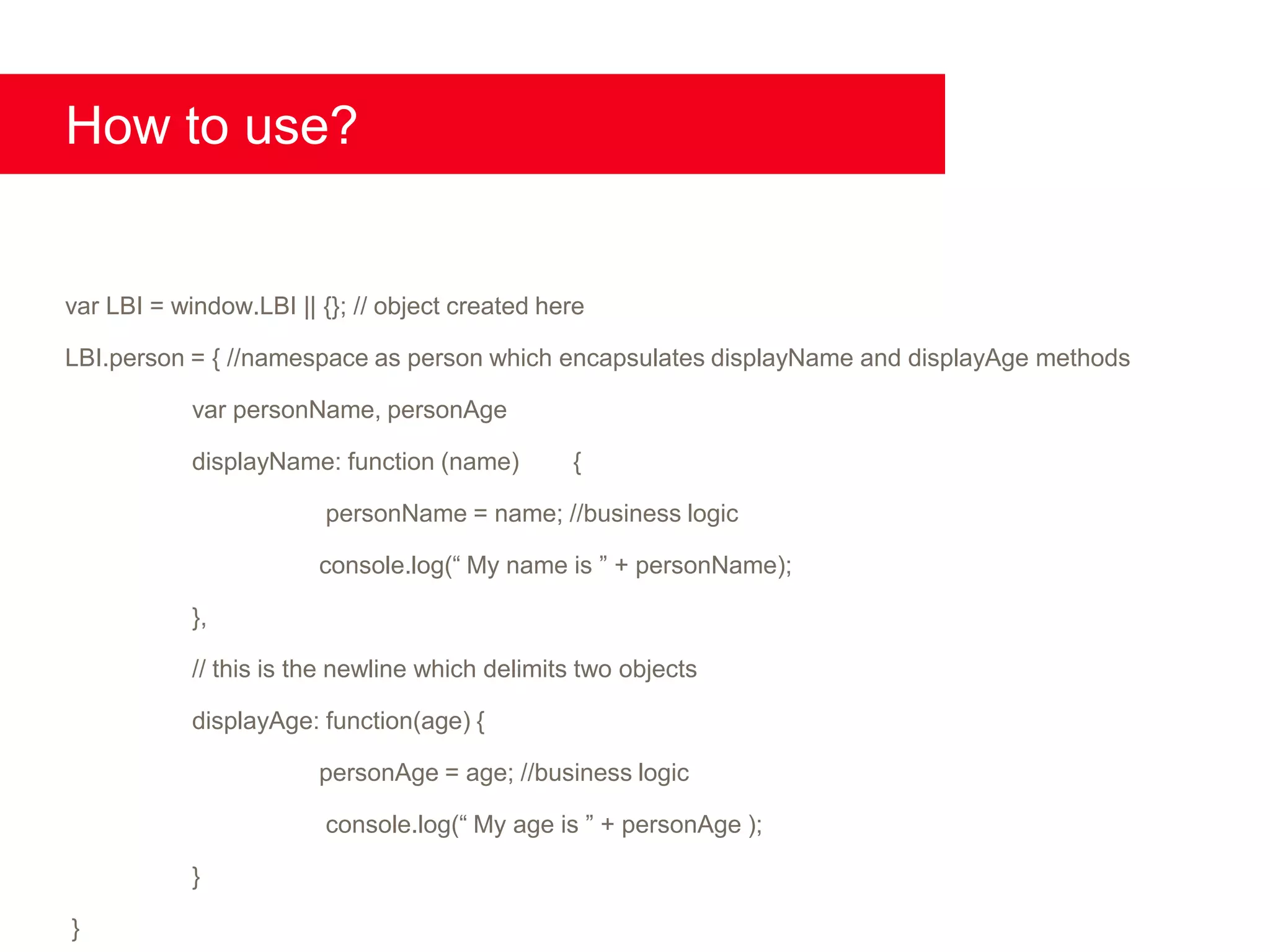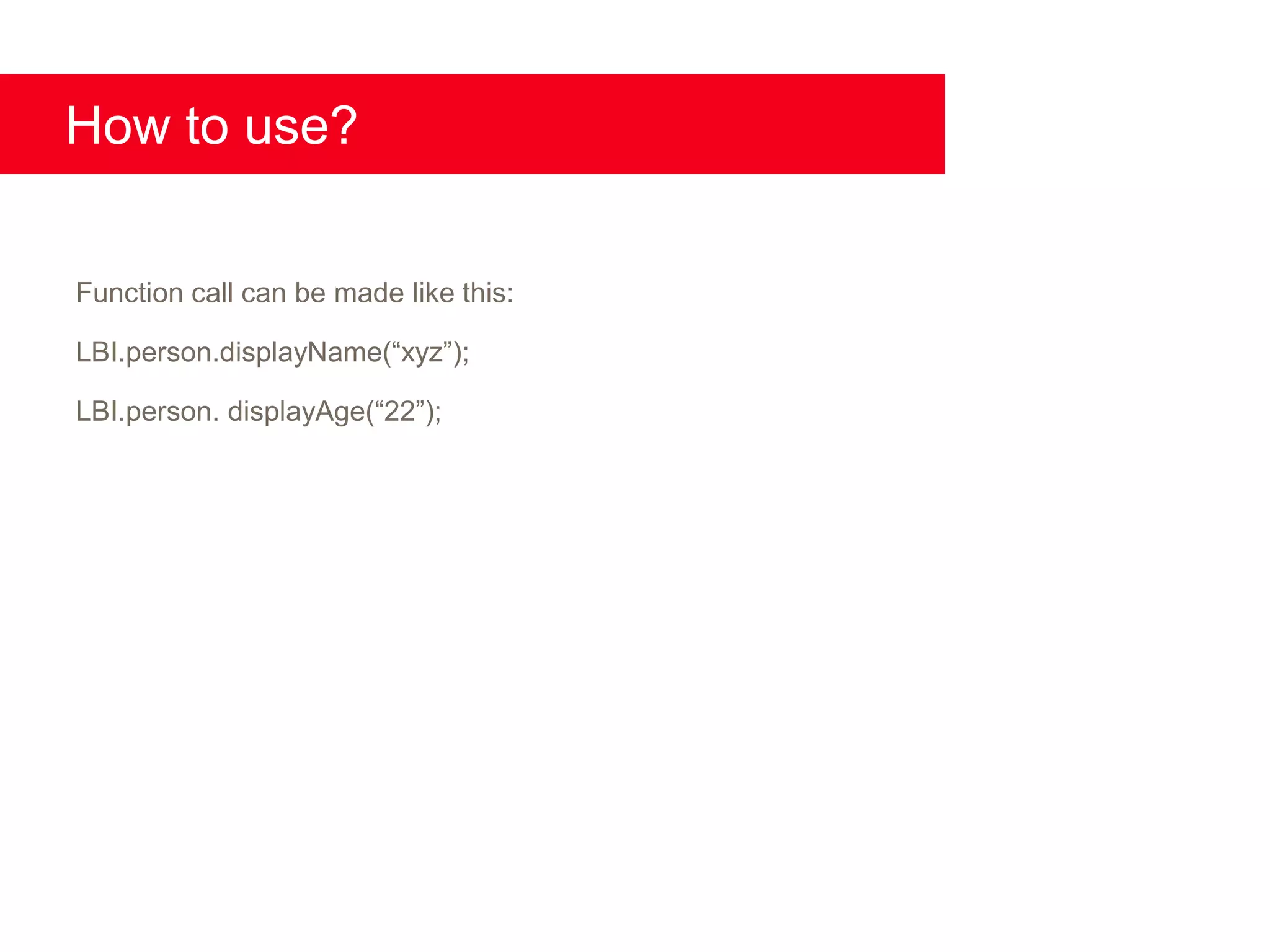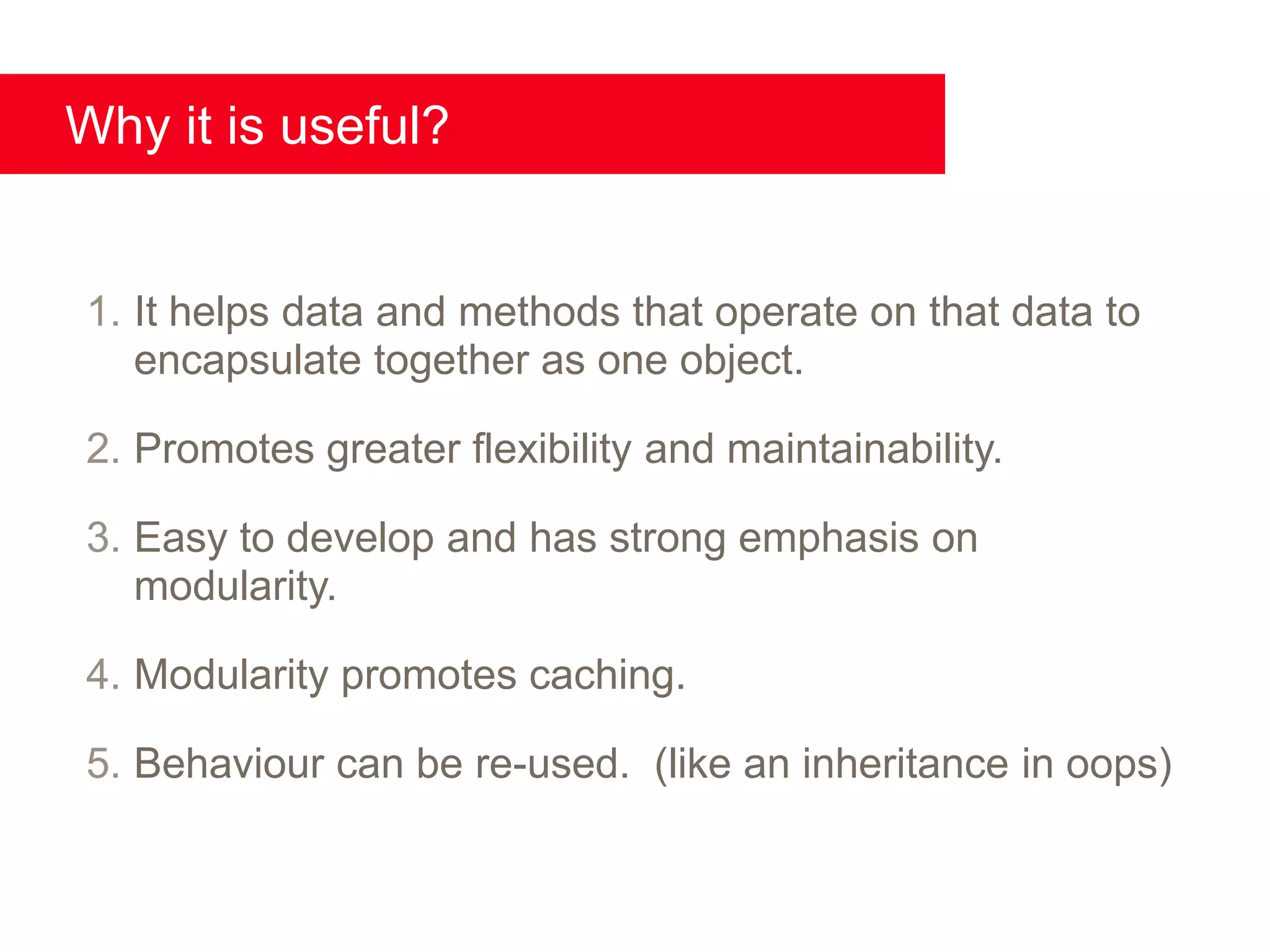The document outlines object-oriented JavaScript, highlighting its features such as abstractions, encapsulations, and inheritance. It provides guidelines on naming conventions and demonstrates how to create an object with methods that encapsulate data. The advantages of using this approach include improved flexibility, maintainability, and modularity.

